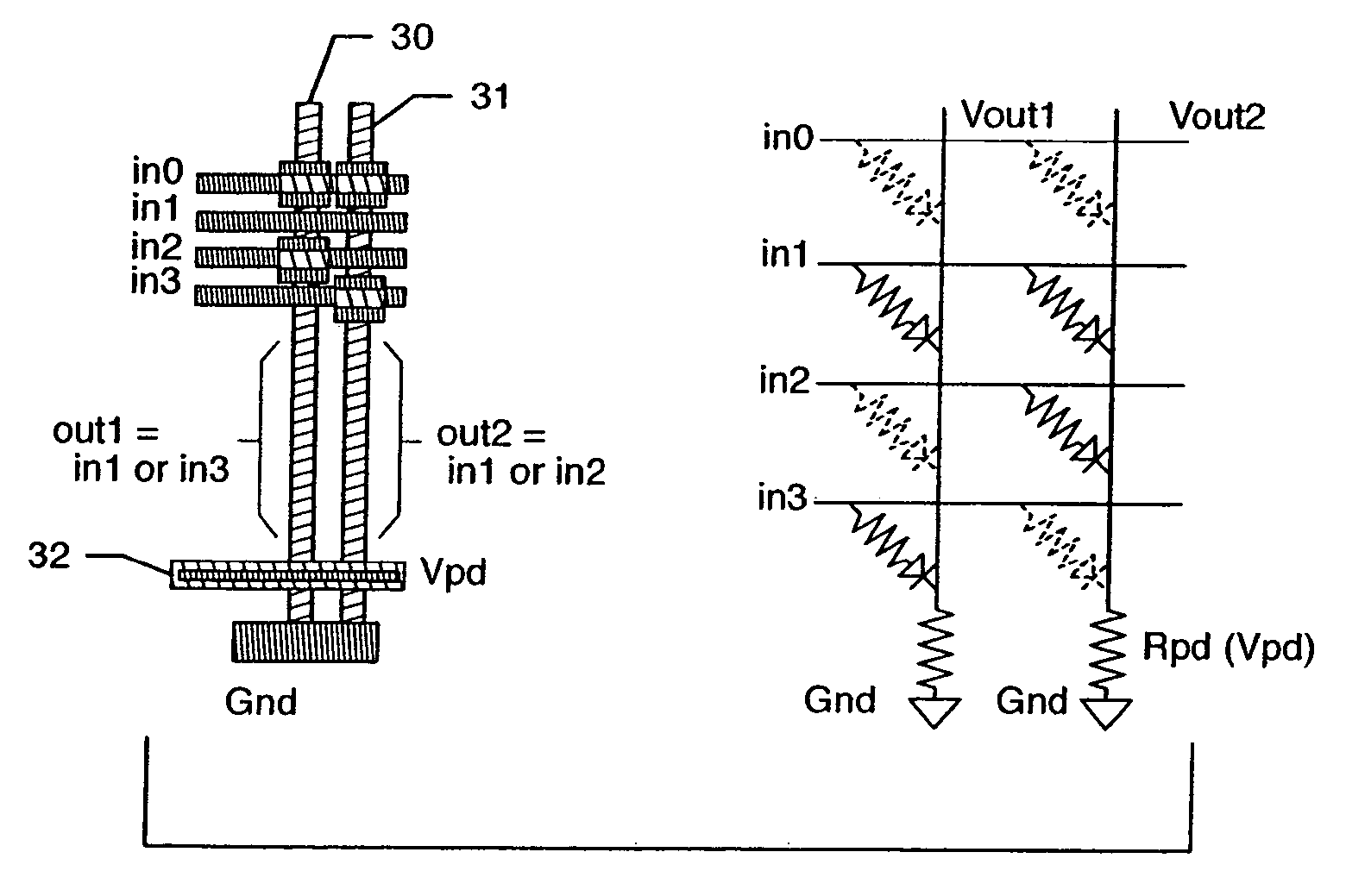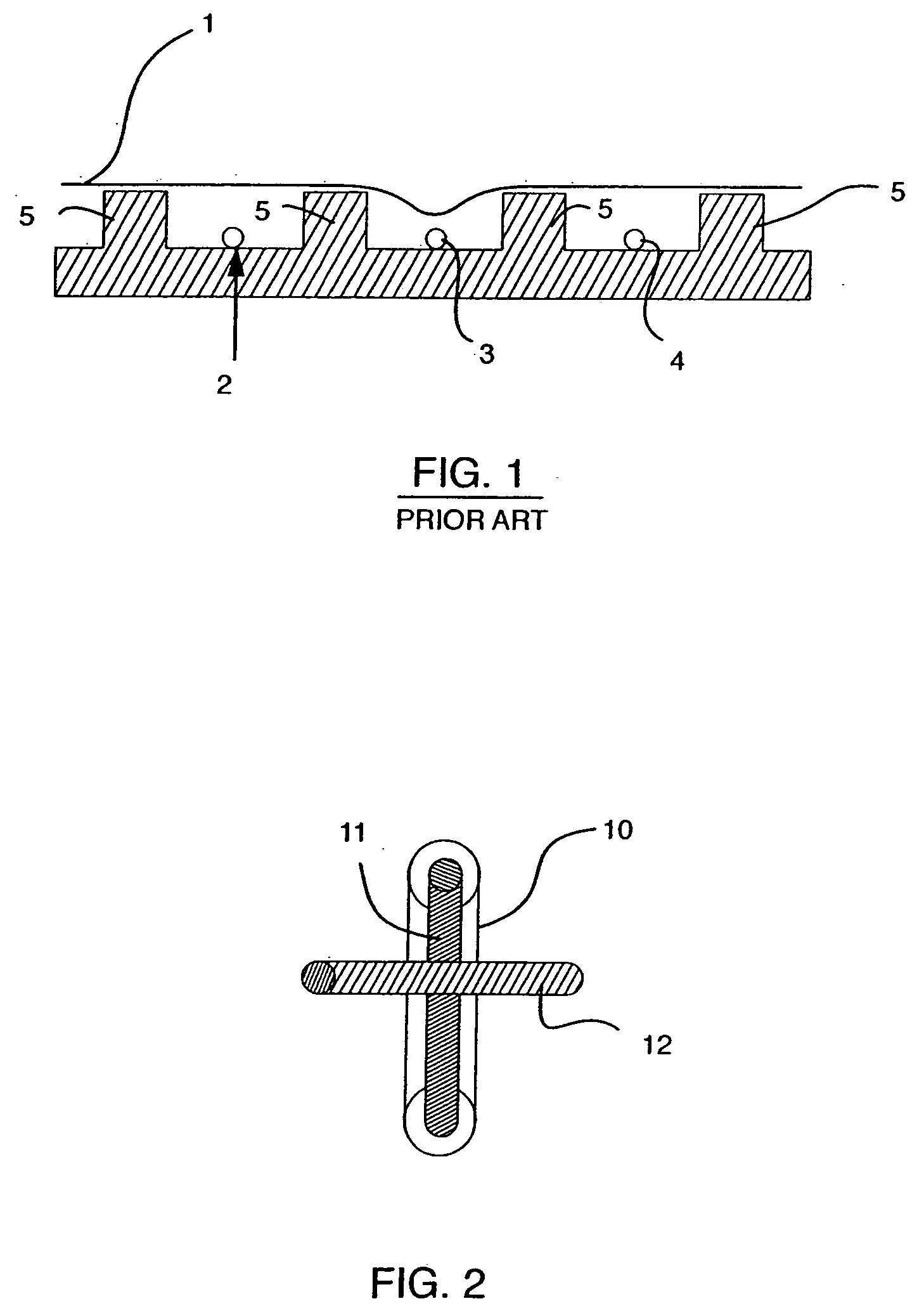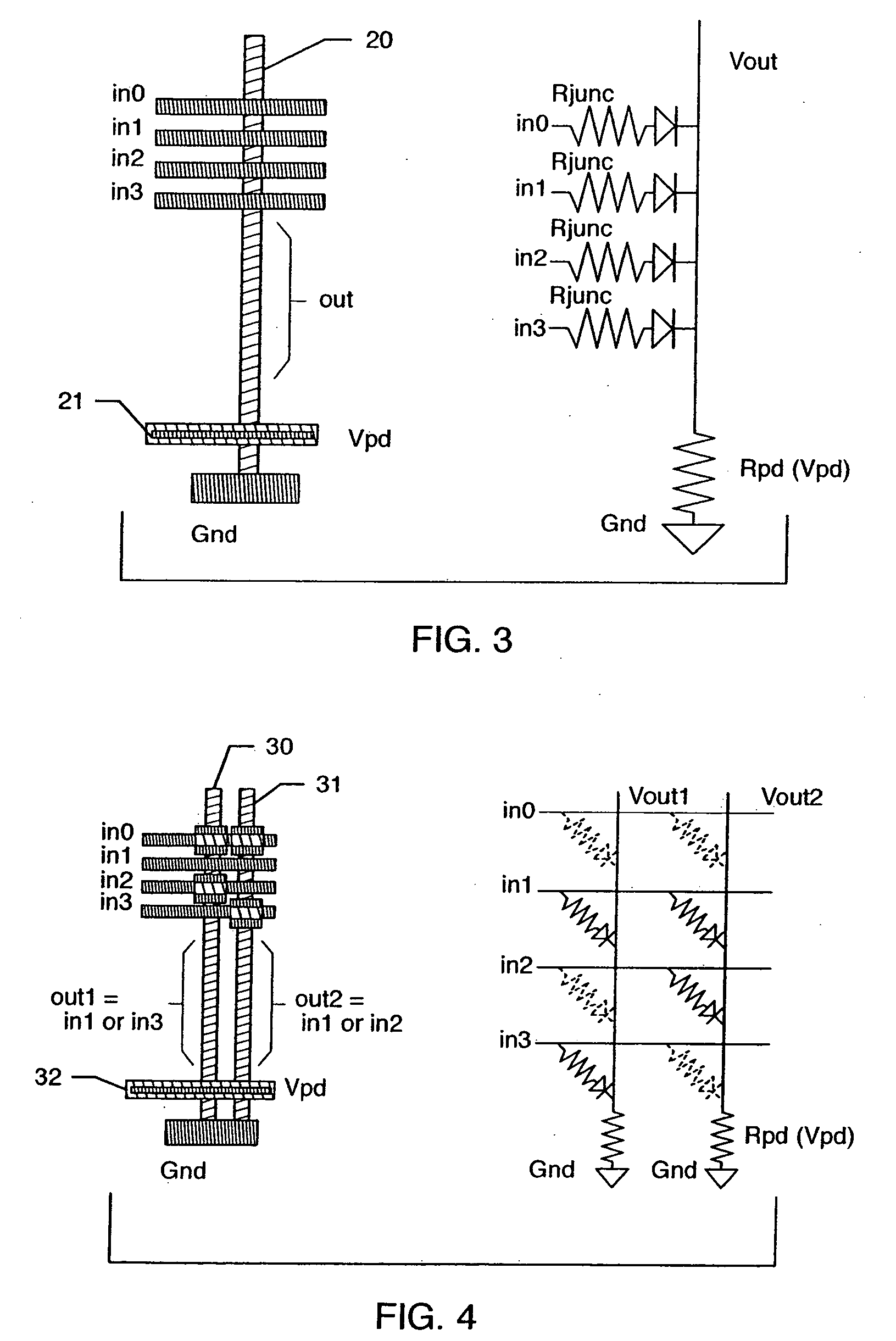Array-based architecture for molecular electronics
a molecular electronics and array technology, applied in the field of molecular electronics, can solve the problems of not teaching how to customize nanoblocks, not knowing how to connect together large numbers of nanoscale or sublithographic devices to create arbitrary logic functions, and not knowing how to arrange for arbitrary connection of logic circuits
- Summary
- Abstract
- Description
- Claims
- Application Information
AI Technical Summary
Benefits of technology
Problems solved by technology
Method used
Image
Examples
Embodiment Construction
Basic Passive Devices
[0039] Reference is initially made to FIG. 3, the left side of which shows a nanotube wired OR logic arrangement. The right side of FIG. 3 shows the electrical equivalent of the left side arrangement. The upper nanotubes or nanowires IN0, IN1, IN2, IN3 contact the lower nanotube 20, thus forming a plurality of low resistance PN-type junctions of the kind already discussed in FIG. 1. In case an upper nanotube IN1 is “far” from the lower nanotube 20, a high impedance configuration is formed. Element 21 is a nanotube covered by oxide, which presents a FET behavior (see FIG. 2), thus producing a voltage-controlled resistance value Rpd. Element 21 acts as a static load in the wired-OR arrangement shown in the Figure.
[0040]FIG. 4 shows a programmable diode OR array. As usual, the left side shows the nanotube arrangement, and the right side shows the corresponding electrical equivalent. The black squares between upper nanotubes IN0 . . . IN3 and lower nanotubes 30, ...
PUM
 Login to View More
Login to View More Abstract
Description
Claims
Application Information
 Login to View More
Login to View More - R&D
- Intellectual Property
- Life Sciences
- Materials
- Tech Scout
- Unparalleled Data Quality
- Higher Quality Content
- 60% Fewer Hallucinations
Browse by: Latest US Patents, China's latest patents, Technical Efficacy Thesaurus, Application Domain, Technology Topic, Popular Technical Reports.
© 2025 PatSnap. All rights reserved.Legal|Privacy policy|Modern Slavery Act Transparency Statement|Sitemap|About US| Contact US: help@patsnap.com



